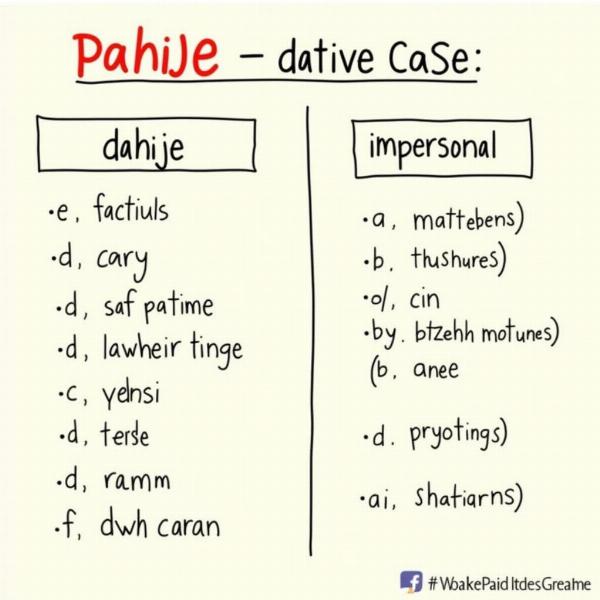The Hindi word “pahije” (पाहिजे) is a crucial element in everyday conversation, expressing necessity, requirement, or desire. Understanding its nuances is essential for anyone learning Hindi or interacting with Hindi speakers. This article delves into the various meanings and applications of “pahije,” providing clear examples and practical insights to help you master its usage.
Different Shades of “Pahije” – From Need to Want
“Pahije” primarily signifies a need or requirement. It’s often used to express what one must have or what should be done. However, it can also convey a desire or wish, making it a versatile word with subtle variations in meaning.
-
Expressing Necessity: “Mujhe paani pahije” (मुझे पानी पाहिजे) translates to “I need water.” Here, “pahije” highlights a basic need.
-
Indicating Requirement: “Hamein zyada samay pahije” (हमें ज़्यादा समय पाहिजे) means “We need more time.” In this context, “pahije” emphasizes a requirement for a specific task or situation.
-
Conveying Desire: “Mujhe nayi kitaab pahije” (मुझे नई किताब पाहिजे) can mean “I want a new book.” Here, “pahije” expresses a desire, although it can also be interpreted as a need depending on the context.
Grammatical Usage of “Pahije”
“Pahije” is an impersonal verb and doesn’t change its form based on gender or number. This simplifies its usage considerably. It’s typically used with the dative case, which marks the indirect object of the verb. For instance, in “Mujhe paani pahije,” “mujhe” (मुझे – to me) is in the dative case, indicating the recipient of the needed item.
-
Example 1: “Unhe naukri pahije” (उन्हें नौकरी पाहिजे) – They need a job.
-
Example 2: “Tumhe kya pahije?” (तुम्हें क्या पाहिजे?) – What do you need?
 Grammatical Usage of Pahije
Grammatical Usage of Pahije
“Pahije” in Different Contexts
Understanding the context is crucial when interpreting “pahije.” The same sentence can have slightly different meanings depending on the situation.
-
Formal vs. Informal: In formal situations, “chahiye” (चाहिए) is often preferred over “pahije.” While they share similar meanings, “chahiye” carries a more formal and polite tone.
-
Polite Requests: “Pahije” can also be used to make polite requests. For example, “Thoda madad pahije” (थोड़ा मदद पाहिजे) could translate to “I could use a little help.”
What Does “Paani Pahije” Mean?
“Paani pahije” (पानी पाहिजे) simply means “I need water” or “Water is needed.” It’s a common phrase used to express thirst or the requirement for water.
Conclusion: Mastering “Pahije”
“Pahije” is a fundamental word in Hindi, conveying necessity, requirement, and desire. By understanding its nuances and grammatical usage, you can effectively communicate your needs and wants in various situations. Mastering this word is a significant step towards fluency in Hindi.
FAQ
-
What is the difference between “pahije” and “chahiye”? While both words express need or requirement, “chahiye” is generally considered more formal and polite.
-
Can “pahije” be used in negative sentences? Yes, “pahije” can be used with negative words to express what is not needed.
-
Is “pahije” always used in the dative case? Yes, “pahije” typically takes the dative case to mark the indirect object.
-
How do I respond to someone saying “Kya pahije”? You can respond by stating what you need or want.
-
Is there a formal equivalent of “pahije”? Yes, “chahiye” is considered a more formal equivalent.
Connect with Meaning-Hindi.in for Expert Hindi Translation Services
Meaning-Hindi.in provides professional Hindi translation services for a diverse range of needs, from business documents and legal papers to technical manuals and educational materials. We also offer website localization, ensuring your online presence resonates with Hindi-speaking audiences. Our team of experienced translators delivers accurate and culturally sensitive translations, helping you bridge the language gap effectively. For high-quality, reliable Hindi translation, contact us at [email protected] or call us at +91 11-4502-7584. Meaning-Hindi.in is your trusted partner for all your Hindi language needs.